Are you tired of struggling with the wrong drill bit for your metalworking projects? Do you want to achieve precision and efficiency in your drilling tasks? Look no further! In this comprehensive guide, I will walk you through everything you need to know about metal drill bits, from understanding their types to making the right choice for your specific needs. Let's dive right in.
When it comes to metalworking, the choice of drill bit is paramount. Using the right drill bit can make the difference between a smooth, successful project and a frustrating, time-consuming one. Metal drill bits are designed to tackle the challenges posed by various metals, from soft aluminum to tough steel. Understanding their significance is the first step in achieving your drilling goals.
Key Takeaway: Choosing the right metal drill bit is essential for successful metalworking projects.
When it comes to metalworking, having the right type of drill bit is crucial for achieving precision and efficiency. Let's delve deeper into the most common types of metal drill bits and explore their unique characteristics and ideal applications.
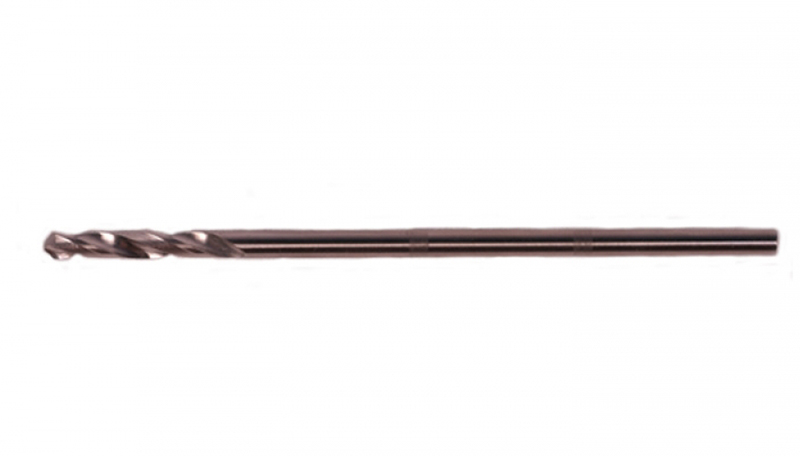
Steel drill bits are the workhorses of metalworking. They are renowned for their versatility and are capable of drilling through a wide range of metals, including mild steel, aluminum, copper, and brass. These drill bits are made from high-speed steel (HSS), which gives them excellent hardness and heat resistance.
Applications:
Ideal for general metalworking tasks and home DIY projects.
Suitable for drilling holes in softer metals and alloys.
Effective for drilling holes in wood and plastic as well.
Pro Tip: Keep steel drill bits well lubricated during use to prevent overheating and extend their lifespan.
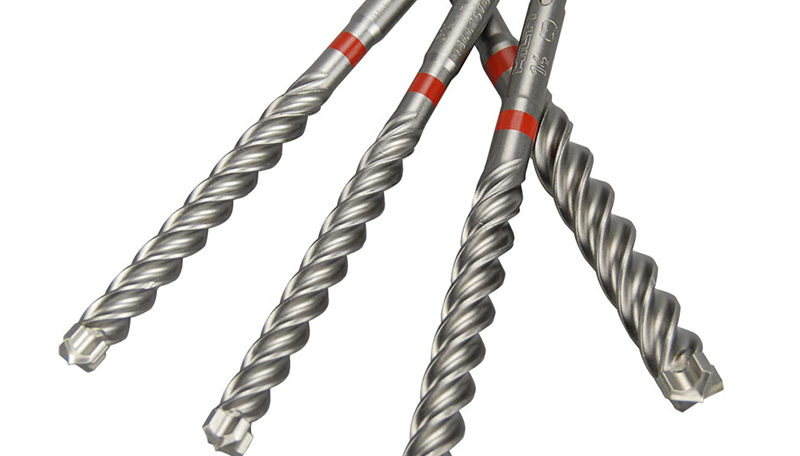
Tungsten carbide drill bits are the go-to choice when dealing with harder metals. They are exceptionally hard and can withstand the rigors of drilling through materials like stainless steel, cast iron, and high-strength alloys. These drill bits feature a carbide tip, which provides superior cutting performance.
Applications:
Perfect for heavy-duty metalworking tasks.
Ideal for drilling into hardened steel, alloy steel, and abrasive materials.
Well-suited for industrial applications and machining hardened components.
Pro Tip: Use a slower drilling speed and apply steady, even pressure when using tungsten carbide drill bits for hard materials.
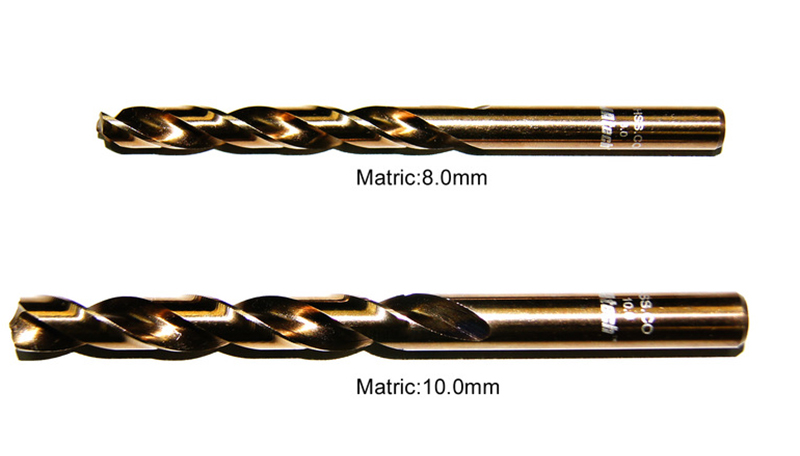
Cobalt steel drill bits, often referred to as "cobalt bits," are designed for high-speed cutting. They are made from a blend of high-speed steel and cobalt, which enhances their heat resistance and durability. These bits are known for maintaining their cutting edges even under high-stress conditions.
Applications:
Ideal for high-speed drilling in metals like stainless steel, titanium, and other heat-resistant alloys.
Suitable for use in metalworking shops and manufacturing facilities.
Effective for drilling precise holes in challenging materials.
Pro Tip: Use cobalt steel drill bits with a drilling fluid or cutting oil to further improve heat dissipation and lubrication.
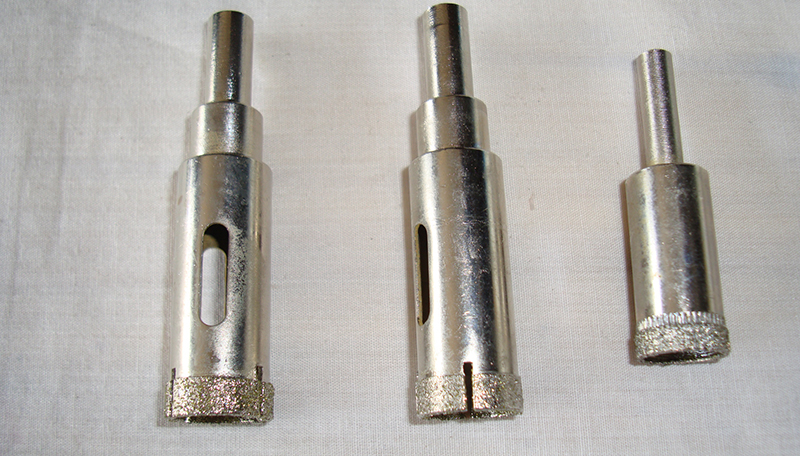
Diamond-coated drill bits are the pinnacle of precision drilling. They feature a diamond-coated tip, which provides exceptional cutting performance and longevity. While primarily designed for non-metallic materials like glass, ceramics, and composites, they can also be used for certain metal applications where precision is paramount.
Applications:
Perfect for drilling in delicate materials where a clean, precise hole is essential.
Commonly used in jewelry making, circuit board manufacturing, and glasswork.
Suitable for applications where minimal material damage is critical.
Pro Tip: Operate diamond-coated drill bits at low speeds to prevent overheating and extend their lifespan.
By understanding the specific strengths and applications of these common metal drill bits, you can confidently choose the right tool for your metalworking project, ensuring efficient and accurate results. Whether you're tackling a DIY task or working on an industrial project, the right drill bit makes all the difference.

Selecting the correct metal drill bit involves a series of considerations to ensure your drilling operation goes smoothly. Here's an in-depth guide on how to make the best choice for your specific needs:
Before diving into the world of metal drill bits, take a moment to assess your project and the materials you'll be working with.
1. Identify the Metal Type: Different metals have varying hardness levels. Whether you're dealing with soft aluminum, tough stainless steel, or something in between, understanding the metal's properties is crucial.
2. Thickness Matters: Consider the thickness of the metal you'll be drilling. Thicker metals may require more robust drill bits with greater durability.
3. Project Specifics: Evaluate the nature of your project. Are you creating precision holes for machinery parts, or are you working on a DIY home improvement task? The nature of your project will dictate your drill bit needs.
Pro Tip: Create a checklist of the metal's properties, thickness, and project specifics to help narrow down your drill bit options.
The size and shape of your drill bit play a significant role in achieving the desired results.
1. Drill Bit Diameter: Choose a drill bit with an appropriate diameter for your hole size requirements. Smaller bits are ideal for precision work, while larger bits are better suited for larger openings.
2. Point Angle: The point angle of the drill bit affects its ability to start drilling efficiently. Common point angles include 118 degrees and 135 degrees. The 118-degree angle is suitable for general use, while the 135-degree angle is designed for tougher materials.
3. Flute Design: Consider the flute design of the drill bit. Standard flutes work well for most applications, but spiral or helical flutes are excellent for chip removal and reducing heat buildup.
Pro Tip: Refer to the manufacturer's recommendations or consult with a knowledgeable supplier to select the appropriate size and shape for your specific task.
The coating on your drill bit significantly impacts its performance. Different coatings offer unique advantages.
1. TiN (Titanium Nitride) Coating: TiN-coated drill bits provide increased hardness and heat resistance. They are excellent for drilling in softer metals and reducing friction.
2. TiAlN (Titanium Aluminum Nitride) Coating: TiAlN-coated drill bits are known for their durability and suitability for high-speed drilling. They perform well in a wide range of materials.
3. TiCN (Titanium Carbon Nitride) Coating: TiCN-coated drill bits offer excellent wear resistance and can handle high-temperature applications.
Pro Tip: Understand the properties of different coatings and match them to your specific drilling needs. For example, TiN may be ideal for aluminum, while TiAlN is better suited for stainless steel.
While performance is critical, it's essential to consider your budget. High-quality drill bits can be an investment, but they often offer better longevity and performance.
1. Quality vs. Price: Cheaper drill bits may save you money upfront but can wear out quickly and provide subpar results. Invest in quality bits for critical tasks.
2. Long-Term Cost: Consider the long-term cost. High-quality drill bits may last longer and require fewer replacements, ultimately saving you money.
Pro Tip: Balance your budget with the demands of your project. For important or high-volume tasks, it's often worth spending a bit more on quality drill bits.
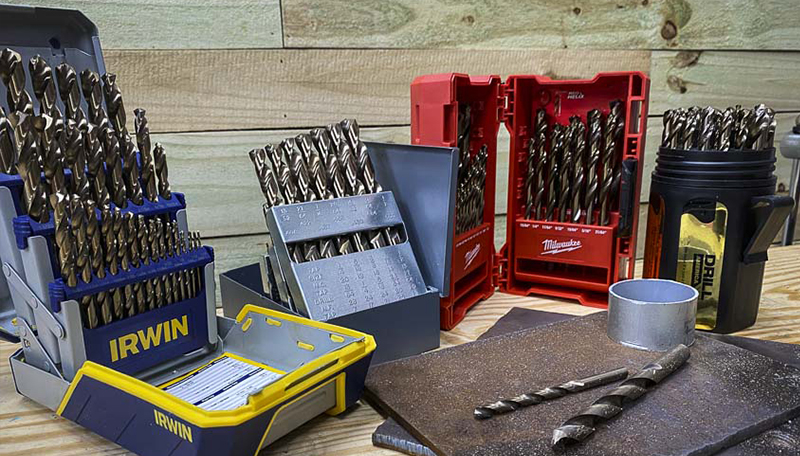
Achieving the best results when working with metal drill bits requires more than just choosing the right bit. Proper techniques and precautions are equally crucial. Here are essential best practices to ensure your drilling tasks are safe and efficient:
Safety should be your top priority when using metal drill bits. Follow these safety guidelines to prevent accidents and protect yourself during drilling operations.
1. Personal Protective Equipment (PPE): Always wear the appropriate personal protective equipment, including safety goggles, hearing protection, and gloves. Safety glasses or goggles protect your eyes from flying debris, while hearing protection guards against noise from drilling.
2. Secure Workpiece: Ensure your workpiece is securely clamped or anchored. A moving or vibrating workpiece can lead to accidents or imprecise drilling.
3. Clear Work Area: Keep your work area well-organized and free from clutter. Remove any potential obstacles that could interfere with your drilling.
4. Stable Stance: Maintain a stable stance while operating the drill. Stand with your feet shoulder-width apart to maintain balance and reduce the risk of tripping.
5. Controlled Pressure: Apply controlled, even pressure when drilling. Do not force the drill; let the drill bit's cutting edges do the work. Forcing the drill can cause overheating and damage to both the bit and the workpiece.
6. Lubrication: Use cutting fluid or a lubricant specific to the metal you're drilling. Lubrication reduces friction, dissipates heat, and prolongs the life of the drill bit.
7. Coolant Management: When working with hard metals, consider using a coolant system to keep the drill bit and workpiece at an optimal temperature. Overheating can lead to bit wear and material deformation.
8. Avoiding Binding: Be cautious of the drill bit binding in the hole. If it does, immediately release the trigger to prevent injury.
9. Emergency Stop: Familiarize yourself with the drill's emergency stop or shut-off mechanism. You may need to stop the drill quickly in case of an unexpected situation.
10. Inspection: Regularly inspect your drill bits for signs of wear, damage, or dullness. Replace worn or damaged bits promptly to maintain drilling efficiency.
Proper maintenance of your metal drill bits is essential to ensure their longevity and continued effectiveness. Follow these maintenance steps to keep your bits in top condition:
1. Cleaning: After each use, clean the drill bit thoroughly. Remove metal shavings, debris, and any residual cutting fluid. A wire brush or cleaning solvent can be helpful.
2. Lubrication: Apply a light coat of lubricant or cutting oil to the drill bit's flutes and cutting edges. This prevents rust and helps maintain the sharpness of the bit.
3. Storage: Store your drill bits in a dry, clean place, away from moisture and humidity. Consider using a dedicated organizer or drill bit case to keep them organized and protected.
4. Sharpening: Periodically check the sharpness of your drill bits. Dull bits will produce poor results and can damage your workpiece. Invest in a quality drill bit sharpener or have them professionally sharpened when needed.
5. Inspection: Before each use, inspect your drill bits for any signs of damage, wear, or deformities. Bent or chipped bits should be replaced immediately.
6. Organization: Keep your drill bits organized and labeled according to size and type. This will save time and prevent confusion during projects.
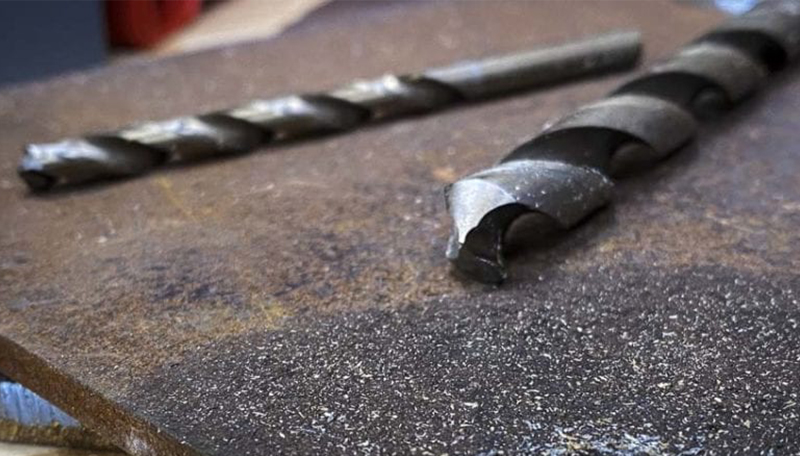
Let's dive into real-life scenarios where the choice of the right metal drill bit played a pivotal role in the success of various metalworking projects. These case studies illustrate the importance of matching the drill bit to the specific requirements of each task.
Project Description: A machinist is tasked with creating precise holes in stainless steel components for a medical device. Precision and cleanliness are crucial to ensure the parts meet stringent quality standards.
Drill Bit Selection: Tungsten carbide drill bits with a 135-degree point angle and a TiAlN coating are chosen. The hardness of stainless steel demands the superior cutting performance of tungsten carbide, while the TiAlN coating reduces friction and heat buildup during drilling.
Outcome: The selected drill bits effortlessly produce clean and precise holes in the stainless steel components, meeting the project's exacting requirements.
Project Description: A homeowner is installing a metal fence in their backyard. The project involves drilling holes in galvanized steel posts to secure them to the ground.
Drill Bit Selection: Cobalt steel drill bits with a 118-degree point angle are chosen. Galvanized steel is relatively softer compared to some other metals, so the hardness of cobalt steel is more than sufficient for the task.
Outcome: The cobalt steel drill bits make quick work of drilling holes in the galvanized steel posts, allowing the homeowner to complete the fence installation efficiently and securely.
Project Description: An automotive enthusiast is restoring a classic car and needs to drill holes in mild steel panels to attach new components. The project requires precision and a clean finish to maintain the car's aesthetic appeal.
Drill Bit Selection: High-speed steel (HSS) drill bits with a 118-degree point angle are chosen. Mild steel is not excessively hard, and HSS bits are both affordable and readily available, making them an ideal choice for this project.
Outcome: The HSS drill bits prove to be the perfect fit for the automotive restoration project, providing precise holes and ensuring the car's classic look is preserved.
Project Description: In an industrial manufacturing setting, there is a need to drill holes in aluminum alloy parts used in aerospace applications. The project demands both speed and precision.
Drill Bit Selection: High-performance carbide drill bits with a TiN coating are selected. Aluminum is a softer metal, and the TiN coating enhances the durability and performance of the carbide bits.
Outcome: The carbide drill bits with TiN coating meet the demands of the industrial manufacturing task, delivering rapid and precise hole drilling in aluminum alloy parts for aerospace use.
Project Description: A metal artisan is crafting intricate jewelry pieces from copper and brass sheets. The project requires delicate and precise hole drilling.
Drill Bit Selection: Diamond-coated drill bits are chosen for their ability to cut smoothly and accurately through copper and brass without causing damage or deformities.
Outcome: The diamond-coated drill bits allow the artisan to create finely detailed holes in the metal sheets, contributing to the creation of exquisite jewelry pieces.
These case studies demonstrate how the careful selection of the right drill bit based on the specific metal and project requirements can lead to successful outcomes. Whether you're working on industrial tasks or pursuing creative projects, understanding the nuances of drill bit selection is essential for achieving the desired results in your metalworking endeavors.
A1: Common types of metal drill bits include High-Speed Steel (HSS), tungsten carbide, cobalt steel, and diamond-coated bits. They are suitable for various metal materials and applications. For instance, HSS is suitable for general metals, tungsten carbide for harder metals, cobalt steel for high-speed cutting, and diamond-coated bits for delicate and brittle materials like glass and ceramics.
A2: Selecting the right metal drill bit for your project involves considering several factors, including the type of metal, thickness, hole size, and budget. Start by understanding the properties of the metal you're drilling and then choose the drill bit with the correct size, shape, and coating based on your project's requirements.
A3: Ensuring safety during metal drill bit operations is essential. Key safety measures include wearing personal protective equipment such as safety glasses, hearing protection, and gloves. Keep your workspace organized, secure your workpiece, maintain a stable stance, apply controlled pressure, use appropriate lubrication, and be aware of emergency stop mechanisms.
A4: Proper maintenance of metal drill bits is crucial for their longevity. Regular cleaning, lubrication, and storage are essential. Clean the drill bits after each use, apply a thin layer of lubricant, store them in a dry place, inspect them for wear and damage, and keep them organized.
A5: Drill bit coatings serve various purposes, including reducing friction, dissipating heat, and enhancing durability. To choose the right coating, consider the material you're drilling. For example, TiN coatings work well with aluminum, while TiAlN is suitable for stainless steel. Understand the properties of each coating to match them with your drilling needs.
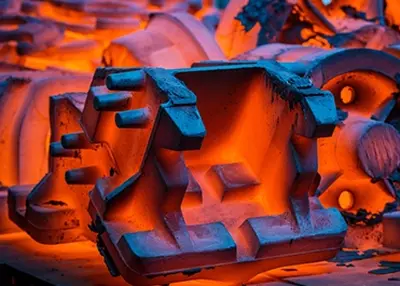 How to Get a Clear Picture of Quenching, Normalizing, Tempering and Other Material Heat Treatment Issues?October 24, 2023Heat treatment of steel consists of normalizing, annealing, tempering and quenching. Among them, annealing and normalizing are mainly used for preparatory heat treatment, and are only used as final heat treatment when the performance of the workpiece is not required. The purpose of quenching is to obtain martensitic organization and improve the performance of steel.view
How to Get a Clear Picture of Quenching, Normalizing, Tempering and Other Material Heat Treatment Issues?October 24, 2023Heat treatment of steel consists of normalizing, annealing, tempering and quenching. Among them, annealing and normalizing are mainly used for preparatory heat treatment, and are only used as final heat treatment when the performance of the workpiece is not required. The purpose of quenching is to obtain martensitic organization and improve the performance of steel.view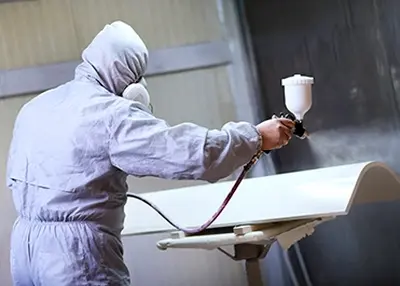 What Is the Failure of a Mechanical Part? How Many Forms of Failure of Parts Are There?October 26, 2023When the mechanical parts in the design of the predetermined period and under the specified conditions, can not complete the normal function, it is called failure. General mechanical parts failure form is based on the failure of the external morphological characteristics to the classification, including: wear failure, fracture failure, corrosion failure and distortion failure.view
What Is the Failure of a Mechanical Part? How Many Forms of Failure of Parts Are There?October 26, 2023When the mechanical parts in the design of the predetermined period and under the specified conditions, can not complete the normal function, it is called failure. General mechanical parts failure form is based on the failure of the external morphological characteristics to the classification, including: wear failure, fracture failure, corrosion failure and distortion failure.view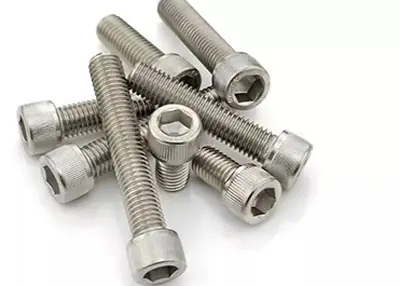 The Basics For the Right ThreadOctober 16, 2023At Richconn, you can easily add threaded holes to your CNC machined parts. Adding by turning gives you many additional threading options. There are two types when it comes to threading: Internal threads and external threads.view
The Basics For the Right ThreadOctober 16, 2023At Richconn, you can easily add threaded holes to your CNC machined parts. Adding by turning gives you many additional threading options. There are two types when it comes to threading: Internal threads and external threads.view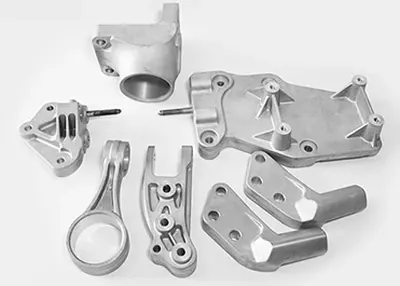 5 Most Common Precision CNC Machining MethodsOctober 24, 2023CNC machining is a generic term used for a variety of machining applications. CNC stands for Computer Numerical Control and refers to the programmable features of a machine that allow it to perform many functions with minimal manual control. CNC machining is the manufacture of parts using CNC-controlled machines. The term describes a series of subtractive manufacturing processes that remove material from a bar or blank to produce a finished part. There are 5 different types of CNC equipment to perform the 5 common types of CNC Precision Machining.view
5 Most Common Precision CNC Machining MethodsOctober 24, 2023CNC machining is a generic term used for a variety of machining applications. CNC stands for Computer Numerical Control and refers to the programmable features of a machine that allow it to perform many functions with minimal manual control. CNC machining is the manufacture of parts using CNC-controlled machines. The term describes a series of subtractive manufacturing processes that remove material from a bar or blank to produce a finished part. There are 5 different types of CNC equipment to perform the 5 common types of CNC Precision Machining.view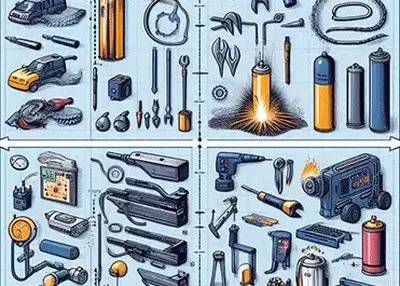 Welding vs. Riveting: Differences, Advantages and DisadvantagesNovember 28, 2023Metal joining is a process of attaching or combining two or more metal pieces or parts together. Metal joining is essential for various industries, such as construction, automotive, aerospace, and manufacturing.view
Welding vs. Riveting: Differences, Advantages and DisadvantagesNovember 28, 2023Metal joining is a process of attaching or combining two or more metal pieces or parts together. Metal joining is essential for various industries, such as construction, automotive, aerospace, and manufacturing.view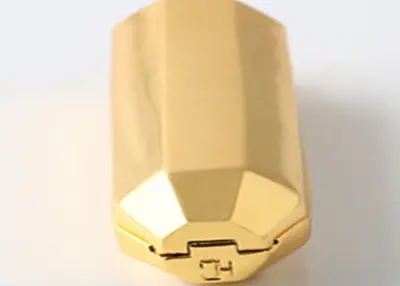 Exploring Chameleon PVD Coating in DesignJanuary 5, 2024The world of design is constantly evolving, with new techniques and materials pushing boundaries and inspiring creativity. One such innovation that has revolutionized the design industry is Chameleon ...view
Exploring Chameleon PVD Coating in DesignJanuary 5, 2024The world of design is constantly evolving, with new techniques and materials pushing boundaries and inspiring creativity. One such innovation that has revolutionized the design industry is Chameleon ...view